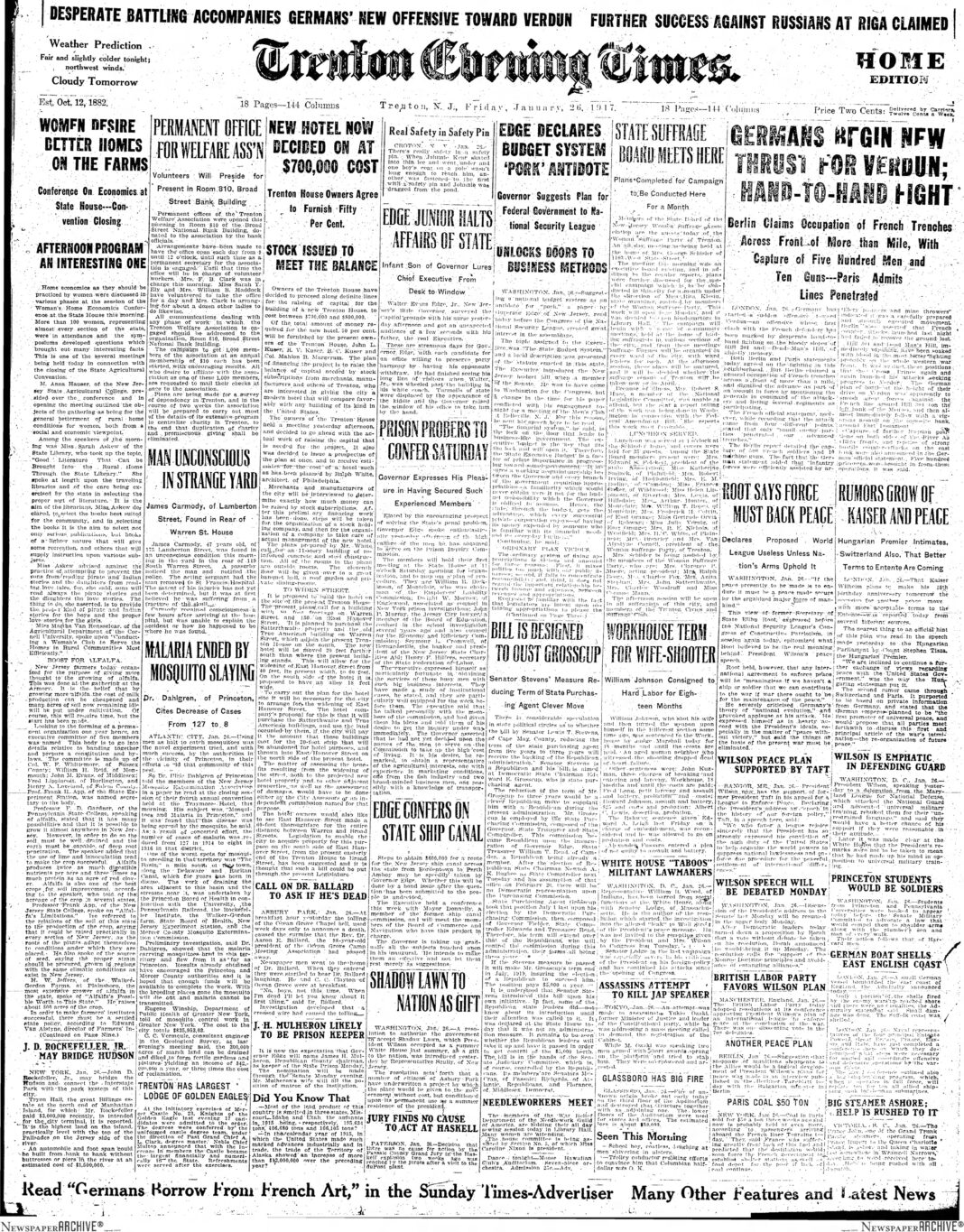For Historic Trenton’s Day in the Life, we’re looking back through newspapers from the beginning and examining everyday problems, solutions and needs during historic Trenton’s past. Today, we go back to Friday, January 26, 1917. Unlike the frigid weather we’re experiencing now, the temperature around this time 105 years ago in Trenton was fair with slight winds from the east.
The canal was underway as New Jersey Governor Walter Edge took steps to obtain $600,000 to fund a route through New Jersey, which equates to about $9.6 million in today’s dollars. A meeting was held with Trenton Mayor Donnelly and discussions with the board were scheduled throughout the week.
Governor Edge was joined by his infant son Walter Evans Edge Jr., who was the last of the governor’s many visitors. Interestingly, instead of being wheeled into the office, the nurse brought the infant to a window for Governor Edge to take and hold him as he continued to work that afternoon. According to a The New York Times article published nearly 80 years later, Edge Jr. went on to become a wealthy watermelon and corn farmer in Florida. In 1996, upon his death, Edge, Jr., a member of Westminster School’s Class of 1935, bequeathed $30 million, the largest benefaction to the School in its history, allowing for, among other things, the construction of Edge House in Simsbury, Connecticut.
Meanwhile, the offices of the Trenton Welfare Association (TWA) opened its doors in room 810 of the Broad Street National Building. The office, which was announced to be open from 9 a.m. to 12 p.m. every day, launched a campaign to get over a thousand members of the association started with encouraging results. Over the next two weeks, the TWA surveyed Trentonians and used the data to create an extensive plan detailing how the association would help the city.
The members from the War Relief Department of the Needlework Guild of America were holding an all-day meeting at Library Hall. They were looking to sew uniforms; and many women from the area came by to help. Students at Princeton University, along with students from Pennsylvania, appeared before the Military Senate to advocate a law that would compel them to become soldiers following Harvard students’ lead if the United States should enter the war in Europe.
An interesting fact appeared in a section called “Did You Know That.” At the time, most of the lead products produced in the USA were smelted in three states: Missouri, Idaho and Utah. With 195,634; 106,680; and 106,105 tons being smelted respectively to each state.
To end things off, a coatless schoolboy was laughing at men shivering, while a trolley conductor was resisting efforts from a patron trying to convince him that the Columbian half dollar was an acceptable form of payment.





